To do this, we want to express a rule that says “only allow a token to be detokenized if the country field of the row matches the country of the customer service agent”. You can’t evaluate this rule if you only store tokens for the names without any additional context. In other words, when you’re trying to detokenize “ff9-b5-4e-e8d54” under the locality-specific rule above, you do not know which country’s resident (or monster) this token belongs to. In this case, you need a consistent tokenization method (sometimes called ‘deterministic tokenization” because tokens might be generated by a deterministic process).
Get the latest Chainlink content straight to your inbox.
But if you do have a choice, it’s useful to understand the limits of the technology. Don’t forget that encryption may also be useful, and for some companies, encrypting data is better than swapping it out for a token. Much like cryptocurrency, the regulatory landscape surrounding asset tokenization is continually evolving.
- This can be a key advantage in systems that rely on high performance.
- When you signed up for the service, the website took your information and issued a token that sits in your phone.
- The tokenization of in-game assets involves tokenizing digital assets used in GameFi projects or metaverses, such as skins, weapons, or in-game currencies.
- Additionally, HVTs can be limited to certain networks and/or merchants whereas PANs cannot.
Tokenization in Data Security
Chainlink Cross-Chain Interoperability Protocol (CCIP) is the most secure and reliable blockchain interoperability protocol in the industry. Stablecoins provide a stable digital currency pegged to less volatile assets like fiat currencies or gold. These tokens maintain a steady value against their underlying assets, enabling everyday use in transactions. The simplest form of tokenization is to exchange plaintext data for a randomly generated value like a UUID. In a simplified world, instead of storing sensitive data, only randomly generated tokens would be stored and transmitted; and only an authorized party would have full authority to view plaintext values. However, in reality only having random tokens isn’t enough, because there are real-world requirements that what is fullstack javascript require different types of tokenization.
Even fortune 500 companies are racing to have NFT of their products. Non-fungible assets like a diamond, a baseball, or the painting of the Mona Lisa, which we mentioned above, cannot be broken into fractions. But when we convert them into non-fungible tokens, we can have full or partial ownership of them.
Additionally, HVTs can be limited to certain networks and/or merchants whereas PANs cannot. In a credit card transaction, for instance, the token typically contains only the last four digits of the actual card number. The rest of the token consists of alphanumeric characters that represent cardholder information and data specific to the transaction underway. The consistency of the tokenization process is an important tradeoff for you to consider.
Types of tokens
Then interested parties can directly buy the deed with cryptocurrency, and the smart contract will transfer the deed to the new owner after a successful transaction. Converting fungible assets into tokens is easier as you can divide them into fractional units. Fungible token converters have an inbuilt abstraction layer that helps to facilitate interoperability and provide platform independence. It is only possible with tokenization, which provides an adequate solution over traditional solutions. Therefore, most cryptocurrency experts will bet on its usage and future prospects. That is why most experts suggest upskilling with a cryptocurrency course.
The technology behind blockchain tokens
So you wouldn’t just store the first name, but also last name, phone number, date of birth, government ID and so on. As long as you delete the original value from the token map, there’s no longer any connection between the token and the original value. Additionally, access control is another potential challenge in this infrastructure. Each node in the diagram shown above is a target for malicious hackers that needs to be locked down. This example is relatively simple, so you might be able to handle this node-by-node, but as the pipeline scales, this becomes increasingly difficult. And to make matters worse, any analytics clients that connect to this data warehouse are also potential targets for a data breach.
Tokenization, on the other hand, replaces sensitive data with a random string of characters, or a ‚token‘. The actual data is securely stored away, and the token is used in its place for transactions. If you lose your library card, no one can get your ID information from it. The tokenization of artwork and collectibles creates digital ownership records for physical pieces, ensuring installing python modules python 3 10 7 documentation the authenticity and provenance of these items while making them accessible to a global audience. Artwork tokenization allows artists and collectors to reach broader markets and enables fractional ownership of high-value items, lowering entry barriers for new market participants. Furthermore, it provides a secure and transparent way to track ownership history, combat forgery, and simplify the transfer of ownership without compromising the physical asset’s security.
When you signed up for the service, the website took your information and issued a token that sits in your phone. When you use the app to make another order, the how to buy fox finance crypto token completes the transaction, and your account information remains in the vault. Tokenization involves protecting sensitive, private information with something scrambled, which users call a token. Tokens can’t be unscrambled and returned to their original state. Stablecoins are digital currencies pegged to a stable asset—typically fiat currencies like the US dollar—aiming to provide price stability in the often volatile cryptocurrency market.
It would be a world with dramatically reduced identity theft and fraud. Companies often have to store and transmit sensitive data like personal identification numbers, social security numbers, or even medical records. It replaces this sensitive data with unique identification symbols, or tokens, keeping the actual data hidden. Chainlink Proof of Reserve (PoR) enables the autonomous, reliable, and timely verification of offchain or cross-chain reserves backing tokenized assets.

 by
by
